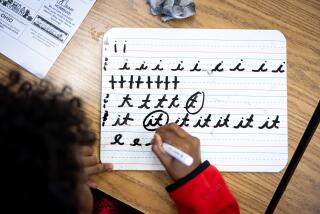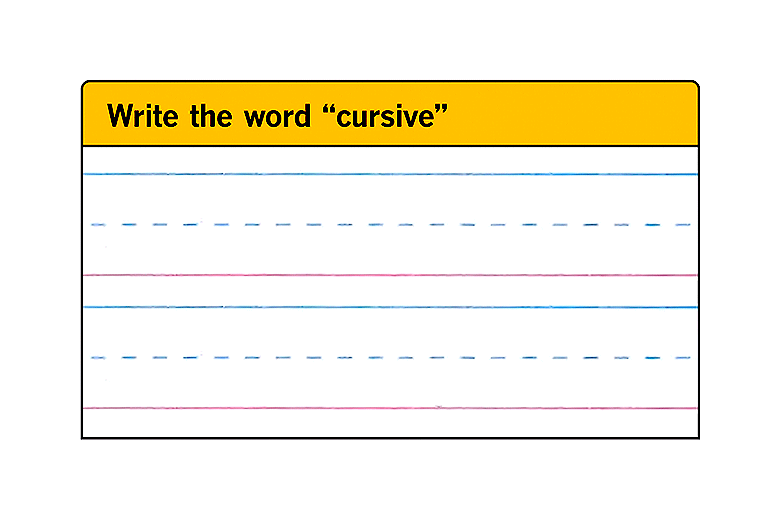PICTURE PERFECT? : Ex-Waiter Says His Symbols Can Serve as Universal Language
- Share via
Drawing from experience, Tom Zavalani figures he has come to the rescue of strangers in a strange land.
The retired San Fernando Valley waiter has invented a do-it-yourself pictograph language that he claims can eliminate communication barriers that frustrate travelers, immigrants and others who do not speak a common tongue.
“Man has yearned for a universal language since the Tower of Babel,” said Zavalani, 69. “Happily, that goal is now within reach.”
Quickly Mastered
Zavalani has assigned 600 hand-drawn “universal” symbols to such things as man, woman, automobile and daylight. The simple sketches can be grouped into sentences by using other symbols that signal such things as action, tense and location.
His hieroglyphic system can be mastered in as little as 30 hours, Zavalani said. That is a vast improvement over other picture-based communication systems that use thousands of symbols and can take months or years to learn, he said.
Once his “Jet Era Glyphs,” as he calls the vocabulary, are memorized, all a user needs to successfully communicate is a pencil and a piece of paper--and a stranger who also has committed the 600 symbols to memory.
Albanian-born, Tomor Sali Zavalani sat down at his dining room table in 1960 to begin sketching out his pictograph system. He said he was motivated by a language problem he experienced upon immigrating first to Canada and, later, to the United States.
In Europe, he had studied philosophy and law but had been turned into a refugee by World War II. Over here, he yearned for a white-collar job.
Worked as Waiter
“I had hoped to go into the travel business. I read every book I could on that business,” he said. “But I couldn’t find a job in the industry. I couldn’t speak much English. I eventually got a job as a waiter.”
He later became fluent in heavily accented English and found jobs in such places as the old Dino’s Lodge on the Sunset Strip. But Zavalani never forgot one thing he had seen in the travel guide books: the tiny symbols used to denote accommodations.
“There would be a little black faucet that meant the hotel rooms had cold water and a red faucet to show they had hot water,” he said. “A little car meant there was limousine service from the airport. A little golf club meant there were golfing facilities there.
“I said to myself, ‘I should invent a sign language with symbols like that.’ It took a lot longer than I thought it would . . . there was a lot of trial and error involved. But that’s what I did. I’m not as dumb as some headwaiters thought.”
The Final Word
Zavalani finished three months ago when he concocted his last symbol: interlocking rings that signify the word marriage.
During the summer, he compiled his hand-drawn sketches and instructions into a 267-page Jet Era Glyphs manual. It illustrates how thoughts can be strung together in the past, present or future tense in simple sentences or in more complex forms such as poems.
Because the pictographs are intuitive--the symbol for letter looks like an envelope--they are easy to recognize, he said. Other symbols used to designate pronouns or concepts such as here and there can be memorized after 15 hours of instruction and another 15 hours of self-study, Zavalani predicts.
Although several linguists have complimented Zavalani on his work, his sign language remains untried.
Zavalani said his next step is to persuade educators to let him test it with small groups of children and disabled people. After that, he wants to teach it to an adult test group--perhaps travel agents.
“My system is so easy to grasp,” he said. “It could become part of high school curricula everywhere. It can be adapted into other languages and taught in other countries. People such as hotel clerks and policemen who know it could wear badges that identify them.
Optimistic Forecast
“It will be five years or more before it would be in widespread use. But if I live like my grandfather, I’ll see it. He lived to be 98. My father lived to 80.”
Language experts who have seen Zavalani’s system say it seems thoughtful and thorough. But they are skeptical it will catch on as quickly as Zavalani predicts.
If it catches on at all.
Dozens of would-be universal languages proposed over the last 300 years have failed. The one that has come the closest, Esperanto, peaked in about 1930. Written in 1887 as a politically neutral vocabulary drawing from a mixture of European, Latin and Oriental languages, Esperanto today has perhaps a million or so speakers worldwide.
“I’m rooting for him,” said Elizabeth Helfman, a Connecticut author who has written three books about pictographic sign languages--including one on the most widely used system, Blissymbolics. It is a comprehensive but complicated system first devised about 40 years ago by Australian C. K. Bliss; today it is used by many people with speech handicaps or learning disabilities.
Doubts Voiced
“I think Zavalani’s is a good system. But Bliss had a head start. I don’t think there is much chance of it catching up with Bliss,” Helfman said.
Russell T. Osguthorpe, associate dean of education at Brigham Young University in Utah, said the strength of Zavalani’s system is its simplicity. But he suggested that other advances, such as use of computers, hold more promise for the disabled.
As for travelers or others struggling with an unfamiliar language, it might also be a struggle to find someone fluent in Jet Era Glyphs, he indicated.
“If you’re the only one who knows it, it’s not of much value,” Osguthorpe said.
More to Read
Sign up for The Wild
We’ll help you find the best places to hike, bike and run, as well as the perfect silent spots for meditation and yoga.
You may occasionally receive promotional content from the Los Angeles Times.







